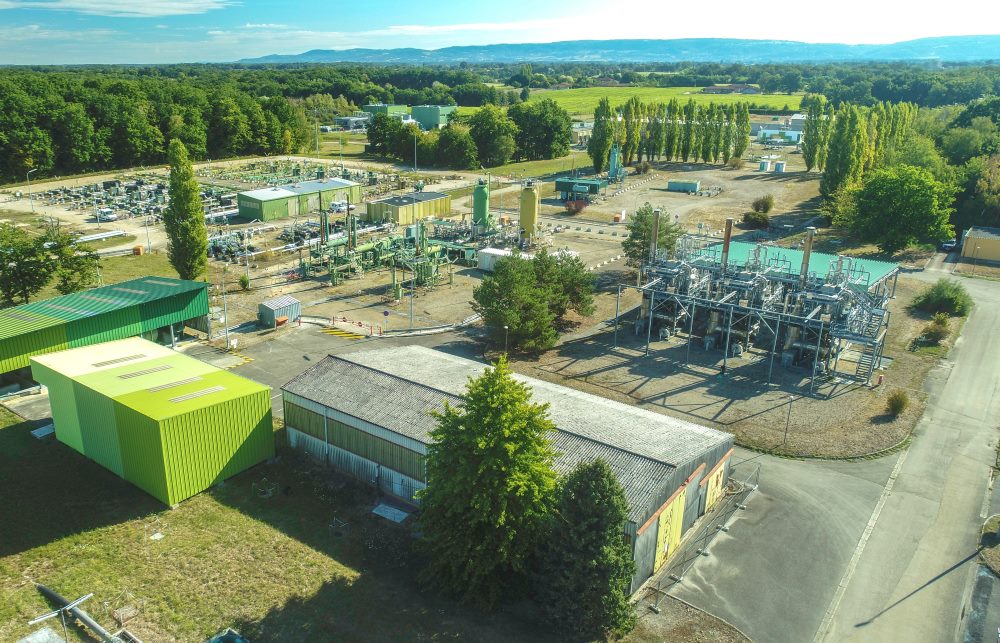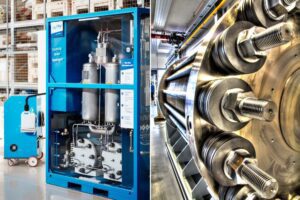Launched in January 2021, HyPSTER is moving to the implementation stage, to produce and store hydrogen at the Etrez site, near Lyon, France. On the production side, a 1 MW electrolyser will generate 400 kg of hydrogen per day. On the storage side, test operations will begin in the EZ53 cavity. This will be followed by around a hundred cycles of hydrogen pressure variation over three months, with no inflow or outflow of hydrogen. These tests will confirm the feasibility of storing hydrogen with safety standards similar to those that have been in place for natural gas for over 70 years. At the end of these test cycles, the hydrogen will be extracted and analysed to ensure the quality of the gas in the cavern.
Industrial-scale deployment starting in 2024
After this experimental stage, the scale will change in 2024: hydrogen production and storage will gradually amplify, until the salt cavern’s full capacity is used up in 2026, i.e., almost 50 tonnes (equivalent to the daily consumption of 2,000 buses). This will enable the supply of the region’s industrial players and hydrogen filling stations.
In the medium term, a hydrogen pipeline should link Etrez to the production and consumption sites, to support the growth of the industry.
Additional studies have already been launched this summer to prepare the follow-up to this project. They aim to develop massive hydrogen storage capacities at the Etrez site. Four caverns – at a depth of 1,300 metres – could be used, each capable of storing 6,700 tonnes of hydrogen.
Cécile Prévieu, EVP Infrastructure of ENGIE, said: “HyPSTER demonstrator’s inauguration in Etrez gives evidence of the strong acceleration of the energy transition in our regions. This innovative project also demonstrates the importance of gas infrastructure, which shall play a major role in decarbonising Europe and France. Hydrogen is an essential molecule for achieving our climate objectives; by taking up the challenge of storing it, ENGIE is proud of paving the way for the sector to grow at scale. This will be key to develop a real hydrogen economy.”
Charlotte Roule, CEO of Storengy, said: “HyPSTER is a real industrial challenge. It has been made possible thanks to the joint efforts of academics, industrial players and local authorities. Together, we are making hydrogen storage a reality. Cycling in salt caverns had never been tested, but it is launched now, in France. We are going to progress on the project to reach industrial scale and replicate the process in other sites all over Europe.”
Mirela Atanasiu, Executive Director ad Interim of Clean Hydrogen Partnership, said: “Underground storage of large quantities of renewable hydrogen will allow the matching of stochastic renewable energy sources with the constant supply needs of industrial and transport users. It will furthermore allow the seasonal storage of hydrogen. The Clean Hydrogen Partnership is proud to support the HYPSTER project by funding the first hydrogen storage salt cavern demonstrator. We are convinced that the unique launch of the testing site in Etrez can serve as a blueprint for other sites in Europe and
contribute to developing technologies for a climate-neutral future.”






